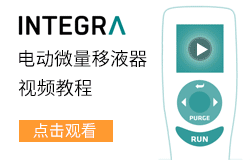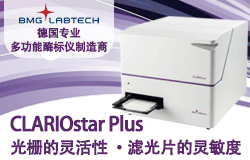454測序技術對HIV感染者干燥血斑中病毒進行抗藥性檢測
454測序技術對艾滋病感染者干燥血斑中病毒進行抗藥性檢測
來自Genomeweb的消息,根據加拿大公共衛生局的研究人員,利用二代測序技術對血斑中艾滋病病毒基因的進行測序,低成本地檢測HIV病毒抗藥性。此方法比基于PCR的對于血漿樣品進行的基因分型成本更低,還可以使更全面了解地艾滋病毒抗藥性信息。
一項發表于Antiviral Therapy雜志的初步研究中,加拿大國家艾滋病病毒及反轉錄病毒實驗室利用羅氏454 GS FLX系統對48位感染HIV-1病毒病人的血斑進行測序,研究病毒的抗藥性。這些樣本來自在2007年進行的一項研究,這些病人被診斷感染HIV-1,但尚未接受任何治療。
這次研究主要是為了確定是否能夠利用二代測序技術從已經干燥的血斑中,鑒定抗藥性病毒株,并且降低其檢測成本。實驗中使用GS FLX系統進行測序,并將結果與Sanger方法進行比較。研究人員將樣本進行序列標記并混合后在GS FLX上測序,獲得3個相互重疊的擴增子序列,覆蓋了整個HIV-1 PR基因以及RT基因的前237個編碼子。
結果發現,454測序結果與Sanger方法相符,甚至檢測到一個Sanger法沒有檢測到的突變。文章的作者說道:“混合樣本的454焦磷酸測序是一個非常有效而經濟的二代測序方法,尤其應用于干血斑的HIV病毒抗藥性發生率鑒定。這一方法有助于在有限的資源及配置下,低成本高通量地獲得HIV病毒抗藥性數據。”
加拿大衛生局HIV遺傳學實驗室主任James Brooks認為將血斑用于檢測相比血液有諸多優勢,比如更容易進行收集儲存。收集血液樣本需要止血帶,針頭,符合標準診所設置并從血液中分離細胞成分。而血斑只需要抽取很少的血液,在紙上進行干燥保存。除此之外,血液需要保存在零下八十度,這一條件對于許多實驗室是一個挑戰,而血斑可更簡單而長期的保存。
同時,他表示這次基因分型的實驗表明,對未接受治療的艾滋病患者的血液和血斑的檢測結果有很好的一致性,為下一步尋找低成本的病毒抗藥性篩選方法奠定了基礎。這一技術有望將原有實驗基因分型價格和商業測試價格分別降低40%和90%。
Brooks說,“雖然454的測序技術相對于其他二代測序系統價格略高,但是454的長度長特點非常適合我們所關注的HIV基因組的區段。而Ion Torrent的技術也有一定的特長,但是目前它的讀長還不夠長。所以這次454成為了贏家。”
除了更加便宜之外,比起傳統方法二代測序方法可以更靈敏的發現變異基因。在初步研究中,即使在出現頻率大于20%的變異中,454發現了一個Sanger測序沒有發現的變異(其頻率約為20.4%)。如果測序深度進一步增加,二代測序可以發現頻率在1%的變異。研究人員下一步將決定測序深度,主要因素在于低頻率變異的臨床意義及重要性。Brooks說,“要決定測序深度并不容易,因為有證據表明一些低頻率的突變也導致抗藥性,而低頻率突變在人群中出現的幾率很小。”測序的深度也是影響檢測價格的因素之一。目前對于一些低頻率突變引起部分患者抗藥性的原因還不明確。
對于臨床來說,另外一個關鍵步驟是如何自動化這項檢測。從樣本制備到生物信息流程的建立,實驗小組正與加拿大微生物實驗室合作開發相關軟件。此外,對于已接受治療的患者,采取血斑是否合理還需進一步論證,因為在接受治療之后所采集的血斑中的病毒和血液中的病毒可能不同。
實驗室的最終目標是建立一個從焦磷酸測序到直接產生抗藥性報告的一體化檢測方案。這一技術將推廣到加拿大以外的其他國家。比如世界衛生組織HIV病毒抗藥性實驗室網絡中的其他實驗室。Brooks所在的實驗室也接受來自其他國家的樣本,通常是一些中低收入國家,實驗室贊助所有的檢測費用,一旦實驗成本可以有效降低,那么就可以提高更多的服務。
除此之外,這一技術也有望推廣到其他疾病比如肝炎。目前加拿大衛生局已經著手用該方法對于丙肝病人的血斑中的病毒進行分型,以監測丙型肝炎的發展趨勢,這一技術無疑對于降低基因分型成本有極大幫助。
關于454
454是第一家新一代測序技術的締造者,基于焦磷酸測序的基本原理,將其優化為迄今為止可達1Kbp單一序列讀長的測序平臺,以其長序列讀長測序保持著在領域內無法替代的應用地位;2007年位于美國Branford 的454公司被羅氏收購,整合至羅氏診斷應用科學部,成為其最重要的產品線之一,為探索新一代測序技術在人類健康事業中的應用而奮力前行。
454 Sequencing from Dried Blood Spots Could Help Monitor HIV Drug Resistance
By Monica Heger
Next-generation sequencing of dried blood spots could be a more cost-effective method for monitoring HIV drug resistance than PCR-based genotyping from plasma samples and could also enable broader access to HIV drug resistance testing, according to researchers with the Public Health Agency of Canada.
In a pilot study, published recently in Antiviral Therapy, researchers from the National HIV and Retrovirology Laboratories in Canada used next-gen sequencing on Roche's 454 GS FLX to screen for drug resistance on previously collected dried blood spot samples from 48 patients with HIV-1.
The samples were part of a prior study, published in Antiviral Therapy in 2007, that compared dried blood spots to plasma for HIV genotyping in patients who were newly diagnosed with HIV-1 and had not yet received treatment.
In the current study, the researchers wanted to test the ability of next-generation sequencing to identify drug-resistance variants from the dried blood spot samples as a lower-cost method of monitoring drug resistance. They used the GS FLX for the sequencing, and compared the results to the genotyping results and to Sanger sequencing.
The researchers used a tagged, pooled, amplicon sequencing strategy on two lanes of the GS FLX, creating three overlapping amplicons from each patient encompassing the entire HIV-1 PR gene and the first 237 codons of the RT gene.
The team found that the results of the 454 sequencing were concordant with Sanger sequencing, and even picked up a variant that Sanger sequencing failed to detect.
"Pooled 454 pyrsosequencing is an efficient and cost-effective [next-gen sequencing] method for determining HIV drug resistance prevalence using [dried blood spot] specimens," the authors concluded. "This technique can lower barriers of cost and throughput and might improve accessibility to HIV [drug resistance] surveillance" in resource-limited settings.
Dried blood spots have a number of advantages over plasma, including ease of collection and storage, said James Brooks, chief of the National Laboratory for HIV Genetics at the Public Health Agency of Canada and senior author of the study. Collecting plasma requires tourniquets, needles, and sophisticated laboratory infrastructure to then separate out the plasma from the cellular components. Dried blood spots, on the other hand, require just a method for drawing a small amount of blood and the paper on which the blood is dried and stored.
Additionally, he added, plasma must be stored at negative 80 degrees C, which can be challenging in areas with unstable power supplies. Dried blood spots are much more durable.
The genotyping study published in 2007 established the "equivalence of dried blood spots and plasma collected in field conditions in drug-naïve people," Brooks said. The next step was to find a lower-cost method of screening those samples for drug resistance.
Current costs for genotyping HIV specimens from dried blood spots run between $125 per sample for in-house methods to more than $400 per sample for commercial kits, according to the researchers, who estimated that their method could reduce those costs by 40 percent compared to in-house methods and by nearly 90 percent compared to commercial testing.
While sequencing with the 454 machine is more expensive than other next-gen systems, Brooks said that the read lengths from the 454 are suited for the "particular region of the HIV genome that we're interested in looking at. He added that the Ion Torrent is an "interesting technology," but its read lengths are not yet long enough. "For our application, [454 is] the winner today."
The investigators found that aside from being cheaper than conventional genotyping methods, next-gen sequencing is also better at picking up rare variants.
In the pilot study, the researchers only looked at variants present in 20 percent of more of the reads, and even at that level Sanger sequencing still missed one variant present in 20.4 percent of reads.
Depending on the depth of coverage, however, next-gen sequencing can detect very rare variants, below 1 percent frequency.
Deciding how deep to sequence and thus what level of variants to screen for is one of the next steps the team must figure out. Brooks said that the team would likely reanalyze some existing studies to evaluate the clinical significance of variants at 10 percent frequency. "We can reliably pick those up in a cost-effective way," he said.
Drawing that cutoff point is tricky, said Brooks, because while there is some evidence that rare variants predict therapeutic failure, not everyone with rare variants fails.
"The field hasn't yet generated enough data for us to have a good understanding for why people fail [drug treatments] with a minor variant present at a certain frequency and other people do not," he said.
Another requirement before sequencing of dried blood spots could be implemented clinically is to automate as much of the sample prep and bioinformatics pipeline as possible, he said.
For this step, he said that the team is working with researchers from Canada's National Microbiology Laboratory in Winnipeg, which has a bioinformatics core that will help develop software for data analysis.
Additionally, he said, the team will test the technique on patients who have already received drug treatment. There has been some concern that collecting dried blood spots might not be a good sampling method for patients who have already received therapy because the virus could change after receiving treatment.
"The current circulating virus may be different from the virus that gets archived," Brooks said. "So we don't know whether it's going to be an appropriate way of collecting specimens in the treatment-experienced population."
Ultimately, Brooks said the goal is to create a pipeline that would "take the processed output from the pyrosequencing and generate a report that will have the drug resistance pattern."
The technique could then be implemented in Canada as well as other countries. For instance, the laboratory is part of the World Health Organization's HIV drug resistance laboratory network that is accredited for testing HIV samples for drug resistance.
"Ultimately, once we've established this pipeline, we'd like to use this technique as a way of conducting both domestic HIV drug resistance surveillance and to also use it for our work that we're involved in with [WHO]," said Brooks.
Brooks said that as part of that network, the lab receives requests from other countries — often low- or middle-income nations — to test samples. Typically the lab sponsors the costs of these genotyping tests, "but if we can do this in a more cost-effective manner, then we can deliver this service to a greater number of clients," he said.
The same technique could be applied to other diseases as well, such as hepatitis. Brooks said the he is currently conducting a surveillance of hepatitis C patients with the Public Health Agency of Canada, doing genotyping of dried blood spots. "There's no reason why we couldn't use the same [sequencing] technology to lower the costs of genotyping," he said.
- 贊德公司關于美國Med associaties中國獨家代理聲明
- MCE推出AI藥物篩選平臺,實現數千萬的分子快速篩選
- 迪必爾入選2025關鍵技術研發計劃"合成生物學"項目
- 美國國立衛生研究院宣布停止對僅動物研究的資助
- 智聽自然,聲動未來:沃德精準亮相"聲景中國"研討會
- 赫西智能高速冷凍離心機亮相央視"革新人工催產技術"
- 易科泰榮膺“SFAA 植物工廠應用十大優秀企業”稱號
- 百蓁生物推出一站式高精度HDX-MS分析服務
- 10x Chromium GEM-X動物及畜牧類研究獎勵計劃啟動
- 生物芯片空間多組學平臺再添一臺CosMx SMI成像系統
- PicoQuant顯微鏡助力開發高效單光子發射源二維材料
- 安捷倫與北師大共建大灣區污水流行病學聯合實驗室
- 客戶專訪:RAYPA培養基制備器使用心得與經驗分享
- 美森攜CTCC細胞庫與干細胞技術亮相東南大學高研院
- 赫西儀器參與起草國標《實驗室離心機》條例
- 因美納邀您參加CSCO第九屆血液腫瘤學術大會
- NGDx2025中國先進診斷技術開發與應用論壇議程表
- 10x Chromium GEM-X動物及畜牧類研究獎勵計劃啟動
- Vizgen攜森西賽智亮相空間生物國際會議分享空轉進展
- 怡美通德正式成為PacBio中國區授權代理商
- 相約BioCon2025,因美納邀您共話腫瘤精準醫學新篇章
- 怡美通德邀您共赴單細胞及空間轉錄蛋白多組學論壇
- 10x Genomics技術方案更新(5月),新手冊邀您下載
- 10x新品發布網絡研討會:Visium HD 3’空間分析方案
- Oxford Nanopore明日直播:納米孔測序大會亞太專場
- 10x邀您報名Visium和Xenium數據分析研討會(北京場)
- 第三屆中國國際生殖醫學健康大會(北京站)通知
- 10x Genomics技術方案更新(4月),新手冊邀您領取
- 10x邀您參加單細胞與空間多組學前沿峰會-北京站
- 真邁FASTASeq 300 Dx獲批NMPA三類醫療器械注冊證
Copyright(C) 1998-2025 生物器材網 電話:021-64166852;13621656896 E-mail:info@bio-equip.com






